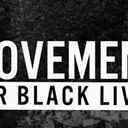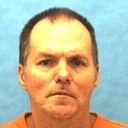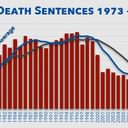“People lie, but insects don’t lie”
Joseph Neff, Staff Writer
December 11, 2002
The News and Observer
Getting sentenced to death was a lucky break for Alan Gell.
Like any other indigent inmate found guilty of a serious crime, he was entitled to an appeal of his conviction for the 1995 shotgun murder of Allen Ray Jenkins in Jenkins’ Bertie County home. That appeal focused narrowly on Gell’s 1998 trial.
But Gell’s death sentence guaranteed him something more: two post-conviction lawyers to examine the case more broadly. Paid by the state, their job was to look at the entire case, not just the trial, to see whether Gell was treated fairly, both inside and outside the courtroom.
Equally important, Gell’s lawyers had the right to all his law enforcement files, a right that state law gives only to death row inmates.
The lawyers — Mary Pollard of Raleigh and James P. Cooney III of Charlotte — began working on the case in 2000, after Gell’s direct appeals to the N.C. Supreme Court and U.S. Supreme Court were rejected.
Pollard started first, reading the trial transcript and examining the exhibits. As she waited for the Attorney General’s Office and the State Bureau of Investigation to deliver their files to her office at the law firm of Womble Carlyle Sandridge & Rice, she identified a vital question about the case: When did this murder happen?
Pollard called Dr. M.G.F. Gilliland, the pathologist who had testified at the trial that Jenkins was probably killed between April 3 and April 8. Gilliland explained that her lack of data on the temperatures in Jenkins’ house made it impossible to determine the time of death more precisely.
As Pollard researched time-of-death issues, she learned that there existed a field of study called forensic anthropology, and she started a file on it.

Days later, as Pollard waited
in her dentist’s office
leafing through an old copy of Newsweek, she stopped at a page with
pictures of a decomposing human hand.
The article was about Murray Marks, a forensic anthropologist at the University of Tennessee who worked closely with law enforcement agencies around the country to determine time of death, most often in homicide cases.
Pollard contacted Marks, who agreed to look at the case. She sent him a copy of the autopsy, Gilliland’s trial testimony and crime scene photos.
Meanwhile, the attorney general and the SBI delivered their files to Pollard.
In the files, Pollard and Cooney found undisclosed evidence of Gell’s innocence: a secretly taped phone conversation in which 15-year-old Crystal Morris, who became the state’s key witness at trial, contradicted early accounts she had given police and rehearsed the story she would tell law enforcement.
They also found previously undisclosed statements by friends, family and neighbors who had seen Jenkins after April 3, 1995 — the only day Gell could have committed the murder. Gell was in Maryland and Virginia on April 4 and 5, and he was jailed for car theft upon his return until after Jenkins’ body was found on the 14th.
In all, Pollard and Cooney tallied up statements from 17 people who said they saw Jenkins alive after Gell had been jailed. (Some of those witnesses wavered about the dates in re-interviews with police months after the murder.)
The statements convinced the lawyers that Allen Ray Jenkins was not killed April 3.
Their client, they believed, was telling the truth when he said he had nothing to do with the crime.
Down on the farm
In March 2001, the lawyers visited Marks at his workplace in Knoxville, Tenn. It is officially named the Anthropological Research Facility. Most people in law enforcement call it the Body Farm.
Marks performs much of his research on a wooded, hilly, two-acre piece of land next to the University of Tennessee Medical Center.
Behind a pair of tall fences — chain link topped with razor wire on the outside, and solid wood inside to block the view — dozens of bodies rot and decompose, just as Jenkins did in his home in April 1995.
But at the Body Farm, Marks and his colleagues study the process and chart the course of human decomposition. The goal is to help answer the question posed by police everywhere when they find a cold body: When did this person die?
Soft-spoken, bearded and with intense brown eyes, Marks speaks with the passion of someone who knows his research into human decomposition is extremely valuable to police, medical examiners and families of victims.
Marks finds the process of human decomposition amazing, “nature at its best.”
He and his staff study bodies clothed and unclothed. They put them in cars, lean them against trees, place them in water, bury them, and hide them under concrete slabs. They wrap them in plastic, put them in the sun and in the shade.
And each step of the way, they measure, weigh, photograph, take tissue samples, count bugs, take notes and enter it all in a database.
The research has yielded a rough formula for determining the time of death that takes environmental variables into account.
They have found that one variable dominates all others — temperature.
Roughly speaking, bodies decompose from two forces, bacteria from the inside out, and insects from the outside in. The process speeds up as temperatures rise, and slows as temperatures fall.
Marks and his colleagues have devised a unit of measurement they call a “degree day.” Twenty-four hours at 80 degrees equals one degree day. The outer layer of skin peels off at two degree days. Internal organs are liquefied at seven degree days or more. Limbs turn black at 14 degree days.
Almost all of Marks’ work is for police and prosecutors. For him, the Gell-Jenkins case was a rare foray on behalf of a defendant.
He examined Jenkins’ autopsy report and photos and video of the crime scene. Given the degree of bloating, the state of Jenkins’ internal organs, the marbled appearance of his arms and legs, Marks concluded that he had died approximately seven degree days before the April 15 autopsy.
What did this mean in terms of the actual time of death? It depended on the temperatures in Jenkins’ house. An average of 80 degrees in the house would put date of death on April 8, while an average temperature of 40 would place it at April 1.
Cooney and Pollard turned to Allen Eberhardt, a mechanical engineer and former professor at N.C. State University.
Using a U.S. Department of Energy computer program that simulates the energy requirements of a house, Eberhardt plugged in the data. The 1,140-square-foot dwelling was fully insulated and built on a brick foundation. He examined the venting, windows, curtains and floor plan.
He added daily weather information from nearby Lewiston, and hourly data from Rocky Mount. And he factored in the presence of an Atlanta Thermoflame heater, which was running in the house when police examined the crime scene.
In the week before Jenkins was found, Eberhardt concluded, the house temperature was seldom below 80 degrees, and exceeded 90 degrees on five occasions.
It was a hothouse.
Shown Eberhardt’s results, Marks concluded that Jenkins had died “on or about April 9.”
Marks also called the lawyers’ attention to something else about the photos and autopsy report: the maggots. There was no evidence that any had matured to the next stage of the insect life cycle, the pupa. An insect expert, he told Cooney and Pollard, could provide additional insight into Jenkins’ time of death.
“The insects will tell you everything,” Marks said recently. “People lie, but insects don’t lie.”
The life cycles of insects are unvarying. Each species progresses from egg to larva to pupa to adult at a consistent and predictable rate.
So Pollard and Cooney turned to James Arends, a former professor of entomology at N.C. State University who now runs a biotechnology company. Arends had taught forensic entomology at the N.C. Justice Academy and consulted in criminal cases with police. He had cooperated on earlier cases with Dennis Honeycutt, the SBI agent who examined the crime scene at Jenkins’ house.
Arends faced an initial obstacle. The police did not collect maggot samples, nor did the medical examiner. Ideally, an investigator would gather insects and let them grow to adulthood to date their age and identify their exact species.
Still, Arends had plenty to work with. He scrutinized the crime scene videos, photos and autopsy. Based on the size and appearance of the maggots on Jenkins’ body, Arends decided they were most likely Calliphora vicina, the common blowfly, the metallic green or blue fly that buzzes noisily in flight.
Blowflies have an extraordinary sense of smell. They locate dead animals within minutes and exploit their biological niche: helping reduce a carcass to a skeleton.
Blowflies wriggle through ripped screens, chinks in houses or doors that don’t close snugly in their search for food.
Once they locate a body, blowflies land and immediately lay eggs. The larvae, commonly known as maggots, hatch within a day. After six days, the maggots crawl away to a dry place and turn into pupae. Their outer skin hardens to form a protective casing — just as a caterpillar creates a cocoon before emerging as a butterfly or moth. The full cycle from egg to adult takes 11 to 14 days — quicker in high temperatures, slower when it’s cooler.
The maggots found at Jenkins’ house were in the larval stage. Police found no casings at the scene.
Based on this, Arends concluded that Jenkins had died four to six days before his body was found — on April 8, 9 or 10.
For Jenkins to have been killed on April 3, he added, it would have meant the blowflies somehow didn’t reach the body for five or six days.
“This assumption,” Arends said, “would be so unreasonable as to be nearly impossible.”
A new focus
Pollard and Cooney returned to Gilliland, the medical examiner, with the results of their research: the blowflies, the Body Farm and the witness statements.
For two decades, Gilliland, like Marks and Arends, has worked with the state, helping police and prosecutors. She still has the intensity and focus that cowed Gell’s lawyers during trial. But now, in the case of N.C. v. Gell, she is no longer focused on the defense lawyers.
Sitting in her office recently at Pitt Memorial Hospital, surrounded by books, papers, microscopes and files, Gilliland recalled a pretrial conference in January 1998. The prosecution team was there: SBI agent Dwight Ransome, Aulander Police Chief Gordon Godwin, and David Hoke and Debra Graves from the Attorney General’s Office.
Gilliland asked about the initial medical examiner’s report, which noted that Jenkins was last seen alive on midmorning April 8 by a neighbor.
That person was mistaken, one of the team members said.
“That information had been withdrawn,” recalled Gilliland.
Gilliland said she assumed this meant that the neighbor — one neighbor — had retracted the statement.
That assumption was demolished when Gilliland met with Gell’s lawyers.
She learned that law enforcement had statements from 17 people who saw Jenkins alive after April 3 but had not shared that information with her.
“Seventeen people, that’s a clue, that’s valuable information,” she said. “I would rely on that kind of information.”
Gilliland has reviewed the work of Arends, the entomologist, and Marks, of the Body Farm. She is in full agreement with them about Jenkins’ time of death.
She riffled briskly through her file folder, extracting some of the withheld statements.
She held up the one from Willie Hoggard, the across-the-street neighbor.
“He lived there 25 years, and he saw [Jenkins] in his truck, and he knows the man very well; he last saw him on the Friday, which is the seventh,” she said, rattling the paper. “He’s alive on the seventh; he’s not decomposing in his house.”
She moved on to the statement of Ricky Alan Odom, who told police he talked with Jenkins that same day about putting a roof on his house.
“A job, the man says, he looks at the roof on the seventh,” Gilliland said. “That is not having maggots working on your remains.”
Gilliland did not attend the trial and did not hear Crystal Morris testify that Gell stood in the bedroom and shot Jenkins in the hallway.
“No, no, no!” Clearly, she said, the killer shot from the hallway into the bedroom.
Crystal Morris “may have intimate knowledge of who was shooting,” Gilliland said. “It may have been herself. It could have been somebody else, I don’t know — that’s not something that I have information about. But with all of this together, I have better information to when it happened and when it did not happen.
“It did not happen April 3, 1995.”
Gilliland is rock certain: The murder occurred while Gell was in jail, probably on April 8 or 9.
“That doesn’t mean that poor Mr. Jenkins wasn’t killed. It just means that this man didn’t do it.”
Staff writer Joseph Neff can be reached at 829‑4516 or jneff@newsobserver.com.



